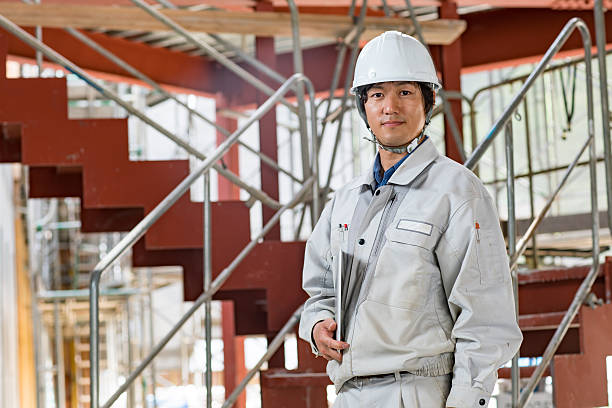After years of planning wrangles, construction of the Silvertown Tunnel in east London is finally underway. By the time Christmas arrives, contractor Riverlinx’s project manager Ivor Thomas hopes that the Herrenknecht tunnel boring machine (TBM) currently driving the Silvertown Tunnel will have passed safely under the Thames. This would be a phenomenal achievement as the TBM for the new east London road tunnel was only launched at the end of August and had barely bored 40m before a fire in September halted all progress for 10 days (see box). The Silvertown Tunnel is the first new road crossing of the Thames in London in over 30 years and client Transport for London (TfL) has said that it will provide better public transport links as well as reduce traffic congestion. The new 1.4km link, which includes 1.1km long twin bored tunnels, will connect Silvertown on the north side of the Thames with the Greenwich peninsula on the south side. The sections of tunnel not bored by the TBM will be formed by cut and cover tunnels and retaining walls as the access ramp reaches ground level. While Thomas and his team are clearly pleased with progress, there are many challenges ahead for Riverlinx which has the 30 year contract to design, build and maintain the tunnel. Riverlinx is a joint venture formed by Bam Nuttall, Ferrovial Construction and SK Ecoplant.

TfL puts the cost of the project over the 30 year contract at £2.2bn including the £1bn construction cost.
Not only is Riverlinx using the UK’s largest diameter TBM at 11.87m, it will be turning the 1,200t machine around in a shaft at Greenwich with just 30mm clearance before it tunnels back to Silvertown. In addition, the contractor will use ground freezing techniques to stabilise the ground before mechanically excavating the cross passages. This is a method rarely used in the UK as a planned approach and one more commonly associated with emergency work. Getting work on site underway has not been straightforward. Local stakeholders have expressed concern that traffic from the operational tunnel will worsen air quality rather than improve it. However, the focus for Riverlinx is now on the construction programme. It has to meet TfL’s 2025 target opening date and, under the terms of the contract, TfL will only start to pay Riverlinx for its work when the tunnel is operational. “The programme is brutal, we have a big machine and constrained sites,” says Thomas when asked about the main challenges. “Rotating the TBM is also complex and some of the cross passages are located in some tricky ground.” The first parts of the TBM arrived on site in east London below the path of the London cable car almost a year ago. It was assembled on site while construction and excavation of the launch shaft was underway.

The programme is Brutal, We Have a Big Machine and Constrained sites
Keltbray Piling undertook the secant piling that forms the launch shaft. The shaft is a peanut shaft, so called because it comprises overlapping circular shafts that resemble a peanut shell when viewed from above. “The shape was selected because it called for a smaller land take than a conventional oblong shaped shaft,” says TfL lead sponsor Andrew Lunt. “The design was an innovation that Riverlinx brought to the project. Not only did the smaller excavation speed up the work, it will help with handing back land at ground level.” Once the tunnel is complete, the site above the launch chamber is expected to become a park while the rest of the area where the tunnel construction site sits will be redeveloped for housing or commercial use. The TBM is now progressing nicely under the Thames, but before it began to pass under the river, Riverlinx undertook an intervention on the cutterhead before the TBM cut through the river wall. “The piling for the new river wall above the tunnel alignment created safe ground to carry out the intervention,” says Lunt. The section from the launch chamber through to the river wall took the TBM safely below the water bearing River Terrace Gravels. On its journey below the Thames, the TBM will pass through the London Clay, the water bearing Harwich Formation and the Lambeth Group, which can also contain water. This created the need for ground freezing during cross passage construction. The alignment just avoids passing into the Chalk. A lot of work went into optimising the number of cross passages to balance the safety of the operational tunnel with the construction risks Riverlinx TBM manager Alessio Menghini is expecting water pressures of up to 3.2bar during the drive.
Riverlinx chose to use an earth pressure balance TBM for the work because of the ground conditions.
Nonetheless, the contractor did adjust the vertical alignment of the bore to give slightly more cover as the TBM passes under the Thames. The original design had 6.5m of cover but that has now been changed to 8m. “We still need to carefully control the pressures to manage the ground water pressure and avoid the risk of a blow out,” says Menghini. A site office-based control room mirrors the control room on the TBM itself and will monitor the steering of the machine and allow for careful analysis of the volume excavated to check for overmining. Tunnelling spoil is being transported to the surface by conveyor and it was a hopper chute on this system that caught fire in September.

River transfer
The spoil is then taken away from the site by river, with four barges a day – two per tide – serving the project. In total 67,000t had been moved by late November when NCE visited the site.Although the TBM driving both bores will be turned around to drive the second bore from south to north, all the spoil from that work will come out at Greenwich and then be taken back through the already completed bore on a continuous conveyor to the muck away area at Silvertown. Inside the tunnel, the conveyor in the first bore has been mounted at a high level so that the muck away work will not hold up the installation of the new road deck, which is due to get underway while the TBM drives the second bore. The cables to serve the TBM have also been routed around the points where cross passage excavation will start before the second bore is completed. This is where the ground freezing comes in to support the water bearing “tricky ground” during excavation.
Optimising cross passages
“A lot of work went into optimising the number of cross passages to balance the safety of the operational tunnel with the construction risks,” says Lunt. The changes included a move from circular cross sectioned cross passages to oval shaped ones. When NCE visited the project, the TBM had halted while the cables to drive it were extended. “The process takes around four hours and needs to be carried out after every 250m advance,” explains Menghini. “While the TBM is stopped we carry out other maintenance tasks, such as washing out of the grout lines.” The cable work followed a successful weekend of tunnelling where Thomas said a 56m advance had been achieved over the two days. This push took the TBM 280m into its route and under the navigation channel of the Thames. Thomas expects to get the machine safely south of the river – around the 60% mark on the tunnel drive – before the site shuts down for Christmas. On the south side of the river, construction and excavation of the oval shaped rotation shaft has been completed and casting work for the supporting plinths to receive and turn the TBM is underway. The 44m by 48m shaft, which is 21m deep, was constructed by Bachy Soletanche using diaphragm wall techniques where interlocking panels of concrete are excavated under bentonite support to form the shaft. According to Riverlinx site agent for Greenwich structures Rafa Loureiro, the technique was selected over secant piles to create a better ground water cut off. Breakthrough into the rotation shaft is expected in late January and it will then take another four months to turn the TBM around. Thomas anticipates that the second bore will be completed by the end of 2023.

Fire warning to industry
The fire on the Silvertown Tunnel conveyor system happened on 27 September and, while it only halted work briefly, a warning has now gone out to the wider industry about the trigger. An investigation by a forensic specialist has now been completed. Analysis of the fire and CCTV footage showed that hot works – welding – which finished at 5.30pm caused smouldering within the hopper chute lining which ignited at 10.20pm despite it being a wet day. The TBM and conveyor were not operating between the completion of the hot works and the fire breaking out. The resulting fire damaged the high angle conveyor used to remove spoil from the tunnel. Riverlinx project manager Ivor Thomas said that the Riverlinx’s evacuation policy worked exactly as planned and no one was hurt during the incident. The fire started in the hopper chute lining which is formed from ultra-high molecular weight polyethylene (UHMWPE), a commonly used material for that application. “The UHMWPE lining was used here because it helps prevent the London Clay from sticking to the hopper. But we didn’t know that it was combustible at the time,” explains Thomas. “We believe the hot works started the smouldering which caused a very low intensity, hardly visible flame, which then ignited something more flammable at around 10pm which is why we brought in a forensic expert to fully understand the sequence of events. The fire caused a lot of damage to the head unit and cut the conveyor belt.” Thomas credits the use of higher grade conveyor belts throughout the project for the damage being limited to a small area. Nonetheless, sourcing replacement parts from across Europe took 10 days.


Recent Comments